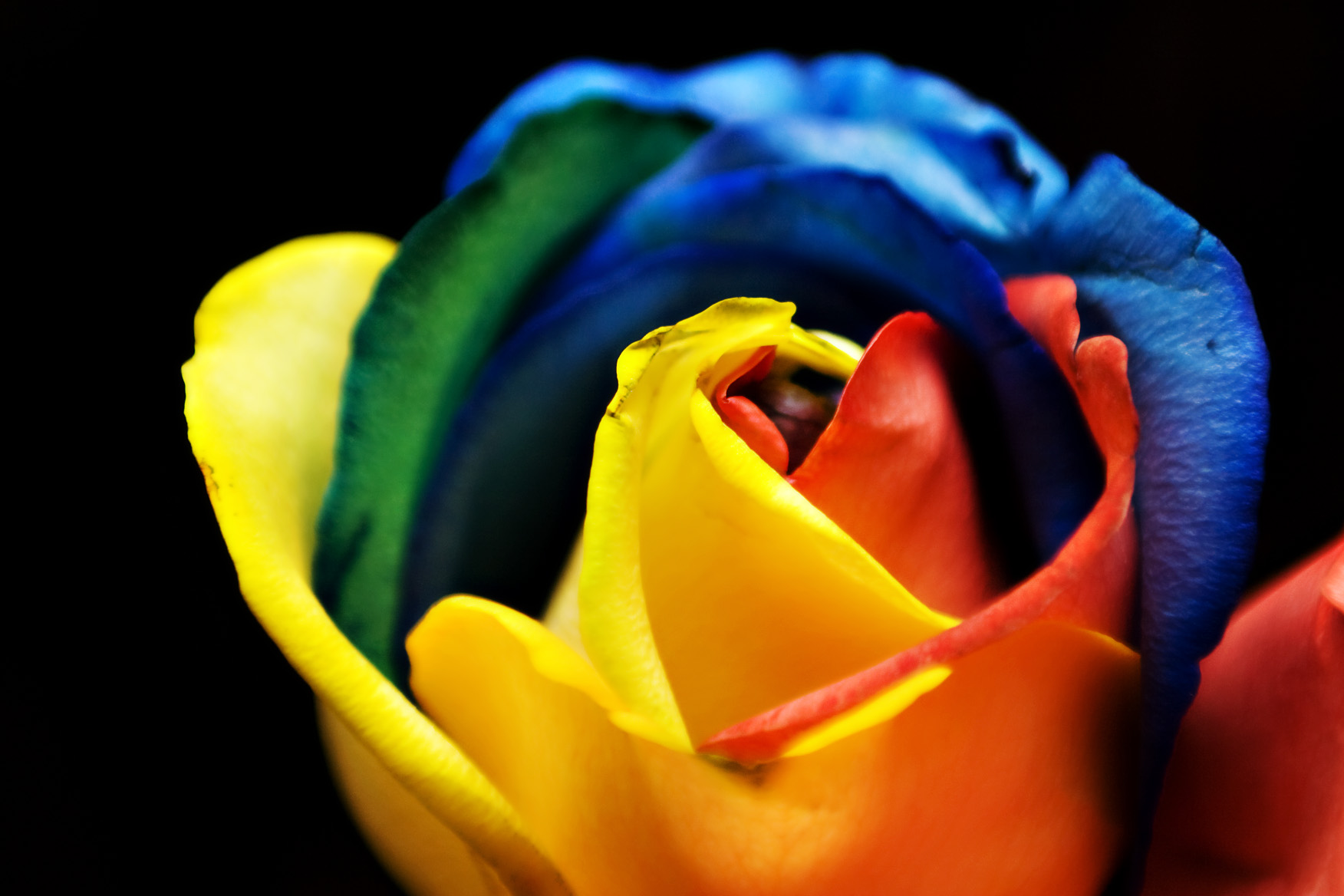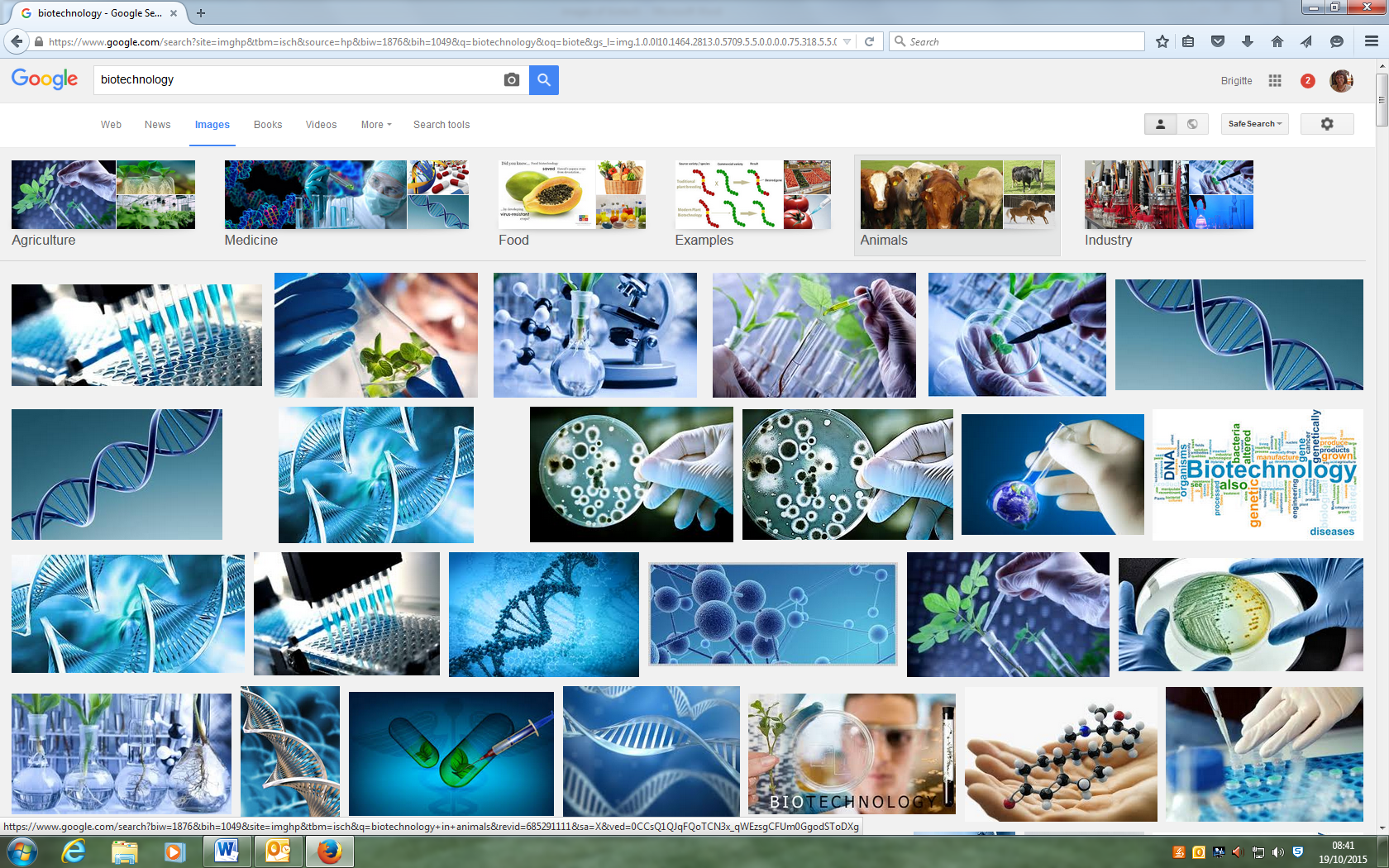October 25, 2015, by Brigitte Nerlich
The colours of biotechnology
 I have recently been musing about images used to make science public and wondered what images are out there for synthetic biology. I knew that in the past cloning was visually represented by ‘Dolly the sheep’ or ‘armies of little Hitlers’, nano found its visual incarnation in nanobots and fantastic voyage, but what images would synthetic biology conjure up, I wondered? To investigate in a quick and dirty way, I searched Google Images (on 19 October, 2015).
I have recently been musing about images used to make science public and wondered what images are out there for synthetic biology. I knew that in the past cloning was visually represented by ‘Dolly the sheep’ or ‘armies of little Hitlers’, nano found its visual incarnation in nanobots and fantastic voyage, but what images would synthetic biology conjure up, I wondered? To investigate in a quick and dirty way, I searched Google Images (on 19 October, 2015).
I first did a test run on nanotechnology and found that Google Images now do what one might call a ‘thematic analysis’ of prevailing images! So for nanotechnology we have groups of images related to medicine, robots, electronics, products and car (the Tata ‘nano’ car, which is obviously not nano-seized). Nanobots are still there it seems, even the ubiquitous ‘Nanolouse’, but most of the images depict nano structures, such as carbon nanotubes and buckyballs. The colour schemes are still what they were when I first looked at nano images, namely red (inside the body) and blue (evoking outer space). So, it seems to me that Google Images captures pretty well what one might call collective visual representations of various types of science.
Synbio – between art and applications
Then I tried ‘synthetic biology’. Here the themes covered are applications, art (congratulations to Jane Calvert and her colleagues!), circuit, food, comic (congratulations to Drew Endy!), and, finally biofuel. The first two images underneath these thematic groups are beginning to be quite ubiquitous. I have seen them in powerpoint presentations and I have used them myself. The first shows a little diagrammatic image of the expected journey from using genes to program cells that become cellular factories to make high value products. This certainly represents the dream of many synthetic biologists, including those working at our Nottingham Synthetic Biology Research Centre. The second (although a couple of days later this was the first) is perhaps the most evocative, as it depicts electrical circuits inside a cell. Biofactories inside cells and circuits are, it seems, becoming symbolic for synthetic biology, which brings an engineering approach to biology.
The rest of the images are mixtures of hands holding vials, more cells and circuits and the odd double helix. The prevailing colour scheme is blue, but blue doesn’t dominate.
Crisper images
What about other fields associated with synthetic biology but currently more topical, such as CRISPR, gene editing and genome engineering? CRISPR, a gene editing tool, is attracting a lot of attention, increasingly so from social scientists who are demanding a public debate about the issues related to editing genes or genomes. Some are carrying out a “pilot survey to gauge what different members of the public think about genome editing”. In an article accompanying the survey, Siliva Camporesi and Lara Marks point out that the “survey also aims to capture what images, ideas or associations people have when they think about CRISPR/Cas9. Capturing this aspect of the public response is important as it can shape the boundaries of the ethical debate and the thinking of policy-makers.” So, I thought my Google Images ‘method’ might be a good starting point to study such public associations.
Google has thematically grouped images relating to CRISPR as: genome editing, knockout, genome engineering, mechanisms, review, knockin – nothing much popular here yet. The images underneath are all abstract diagrams and there is no colour scheme emerging yet. It’s still a black and white issue, so to speak.
When we turn to ‘gene editing’ things become a bit more concrete. We can see images of double helixes being snipped by scissors or knives, for example. Interestingly, and rather surprisingly to me, things get even more concrete with ‘genome engineering’. There are only three rather abstract themes listed: editing, zinc finger nuclease and CRISPR. The images are rather concrete though. Scissors figure heavily alongside the more abstract diagrams that characterise CRISPR images. Amongst the most popular representations are one stark image of an unzipping double helix against a blue background and another rather futuristic one of two hands snipping a red double helix held in a type of transparent vice, again against a brooding dark blue background. A further image shows a yellow pencil with a rubber used to erase parts of a double helix, against brown background. This is an advert for a conference on genome engineering and synthetic biology. This links up with one of the core images of genomics, namely that of reading, or in the case of synthetic biology, writing or rewriting the ‘book of life‘ – a connotation that is otherwise absent from our ‘cutting’ (but not pasting) images.
One tomato, two tomato, three tomato, four
I then thought, ok, so this is the state of affairs with the ‘cutting edge’ stuff. But what about genetic engineering – the old stuff – have images settled down there a bit more? When looking at the images for ‘genetic engineering’, we still find quite a mixture of images used with one or two showing tomatoes. When we look at ‘genetic modification’ we get more tomatoes and some piglets, but strangely no pictures of crops and no pictures of Frankenstein. When we finally get to GMOs, a lot of the images depict tomatoes (a veritable sea of red), especially tomatoes being injected with something. This image has history!
As Wolfgang Wagner says in a classical article on the social representations of GM foods from 2002 (here summarised in 2012): “Genetically modified organisms (GMOs), for example, were gradually introduced during the 1990s.This signalled the beginning of a heated dispute between opponents and supporters of biotechnology in many European countries, the course of which illustrates exceptionally well the steps in the emergence of a social representation. As long as GMOs were not an issue, the intensity of the media’s reporting about biotechnology as a novel scientific achievement was low and insignificant. During this period a significant number of people felt free to answer questions in surveys about technology with the response: ‘don’t know.’ At a certain point, when the technology became a topic of relevance, the media intensity increased significantly and correlated with a simultaneous increase of debates in some countries. This was the time when images of tomatoes being injected with genes through a syringe were circulated and began to be recognized by virtually all citizens as an iconic metaphor for genetic engineering.” Surprisingly this still seems to be the case today, despite the fact that genetic engineering has moved from tomatoes to, mainly, corn/maize and soy.
Yes, we have no tomatoes
So to the final part of my image survey, ‘biotechnology’, a word that has been around since 1921 (according to the Oxford English Dictionary; according to others since 1919) and should therefore have accrued some popular visual connotations. Google images lists the following themes: applications, medicine, food, examples, animals, industry. Now, with medicine I’d have expected some reddish colour scheme; with food, some green and with animals, various colours. However, what we find instead is a sea of blue images, mainly of double helices, hands holding vials or petri dishes, some automated pipetting, and not much more.
GMOs are red
Biotech is blue
Why should that be?
I ask you!
[This Making Science Public post also contributes to my social science work on the BBSRC/EPSRC funded Synthetic Biology Research Centre. You can find other posts on synthetic biology here]
Image: Rainbow rose (Wikimedia Commons)
No comments yet, fill out a comment to be the first



Leave a Reply